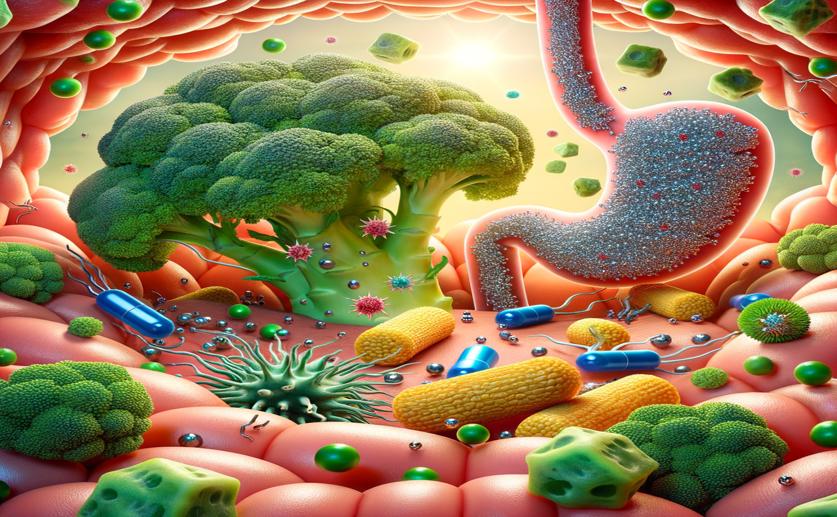
Fighting Stomach Bacteria with Broccoli, Chitosan, and Selenium Nanoparticles
Jenn Hoskins
19th September, 2024

Image Source: Natural Science News, 2024
Key Findings
- Researchers at Kafrelsheikh University developed a new method using biocidal nanocomposites to combat H. pylori infections
- The nanocomposites, made from broccoli seed mucilage and selenium nanoparticles combined with chitosan, showed strong anti-H. pylori activity
- The most effective nanocomposite formulation could attach to and destroy H. pylori cells within 10 hours, offering a promising alternative to traditional antibiotics
References
Main Study
1) Anti-Helicobacter pylori activity of nanocomposites from chitosan/broccoli mucilage/selenium nanoparticles.
Published 17th September, 2024
Journal: Scientific reports
Issue: Vol 14, Issue 1, Sep 2024
Related Studies
2) A new approach against Helicobacter pylori using plants and its constituents: A review study.
3) Evolution of Helicobacter pylori Resistance to Antibiotics: A Topic of Increasing Concern.



 11th September, 2024 | Jenn Hoskins
11th September, 2024 | Jenn Hoskins